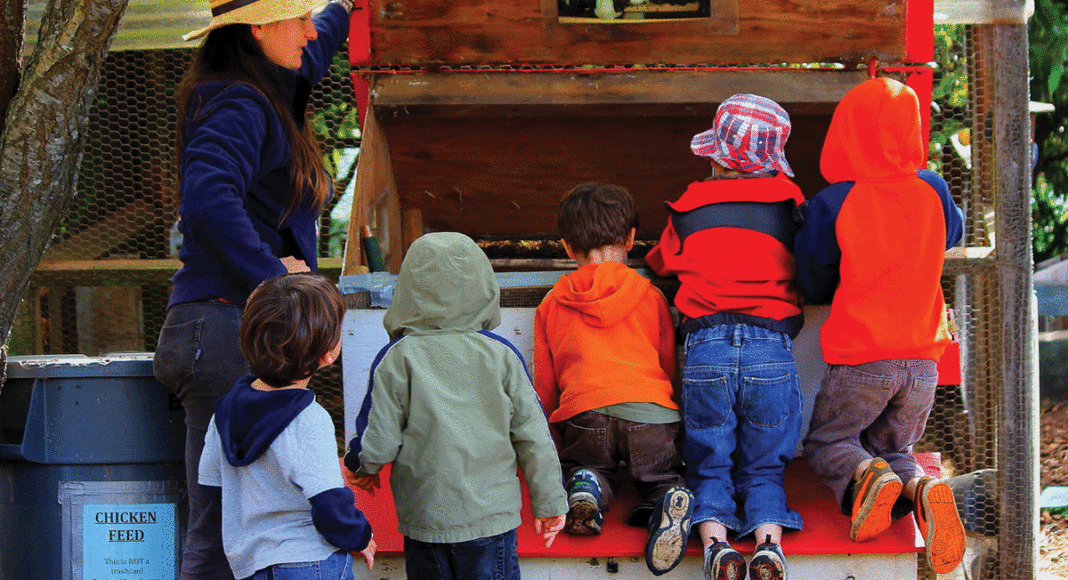EDITOR’S NOTE

This isn’t technically our annual Green Issue, but there’s a lot of green in this issue. Even the fact that a “green issue” was created way back when speaks to how stories with an environmental focus were once few and far between, even in alternative journalism.
Now, of course, with the ever-more-urgent issues around climate change, environmental stories require year-round coverage—I doubt we put out even one year issue a year that doesn’t have some kind of relevant coverage.
Even in that context, though, I think this week’s issue captures how multi-faceted the world of environmental journalism really is. First, there’s Christina Waters’ cover story on the 40th anniversary of Life Lab, a pioneering Santa Cruz “garden classroom” educational program that is bringing not just awareness, but the actual experience of nature to a generation of children. Then there’s Jordy Hyman’s story about a new film documenting the fight for the Beach Flats Community Garden. And Patrick Dwire reports on how local students are preparing for the Global Climate Strike on Friday.
On a non-green-related note, I wanted to mention that I will be moderating a Q&A this Saturday, Sept. 28, with recent GT cover-story subject Jennifer Otter Bickerdike about her amazing music book Why Vinyl Matters, which she will also sign. It’ll be at Streetlight Records, 939 Pacific Ave. in Santa Cruz, at 4pm, and it’s free. Hope to see you there!
LETTERS TO THE EDITOR
Read the latest letters to the editor here.
Re: “Paint Staking” (GT, 9/11):
As a practicing artist and arts activist, I signed the letter of note in this recent article, because it was thoughtfully written and came from a place of sincere concern, while voicing both respect for what has been accomplished at MAH in these last eight years, and hope for how it might look in the future. Certainly it spoke of disappointments and frustrations, but it was additive and constructive as well.
Few would contest Nina Simon’s extraordinary transformation of MAH. Santa Cruz and the art world has congratulated her amply for what she has accomplished in terms of attendance, finances and social justice outreach.
Despite these accomplishments, much was set aside or undervalued during that time, and these aspects should be considered when searching for new leadership. From the perspective of an artist, that might include having an experienced curator who could present contemporary art exhibitions, some of which could again highlight local and regional practicing artists. The museum could actively support the growth of local artists at every level by seeking their collaboration, input and inclusion, rather than creating unnecessary barriers.
There are two areas that I feel get trivialized and lead to misconceptions. Although everyone has the capacity and should be encouraged to express themselves artistically, not everyone is an artist. Those of us who have studied or have practiced art making for years understand what is involved when you choose to pursue art seriously. It is demeaning and hurtful to be silenced as “elitist.” One cannot talk about the importance of art without respectfully addressing those who have created that art and the discipline it takes to dedicate oneself to sustain a serious art practice. The institutional art world may be dominated by male elites, but here in Santa Cruz, there are certainly as many working women artists as men. I doubt that you can find a single one of us who has become wealthy selling our artwork. In fact, we as a community are grieving the loss of so many artists as Santa Cruz becomes more and more unaffordable. The museum could play a role in encouraging struggling artists rather than demeaning or neutralizing them. As a political and social activist, I surely believe that inclusivity and multi-cultural exposure are vital as we move forward, so MAH’s focus on social justice is just fine with me. But interacting and engaging with visuals and viewing mature works of art are two very different things and I’m afraid there hasn’t been much interest in understanding that distinction.
In the article, “tweaks” were mentioned as “tricky to master to everyone’s liking.” Yet there was a hauntingly vague description of the recent hiring process. After two finalists were selected, the search evidently ended badly “when the staff found out who the two finalists were—some administrators expressed dismay, and threatened to shut down the museum in protest.” Shutting down the museum—what was that about? Readers were left to wonder: who is in control of the hiring process and how will it move forward? If there is to be, as the article suggests, a “healthy dose of community involvement and discussions about what’s next,” how will that happen when Nina decided not to read the entire letter that was signed by 100 supporters of the arts. And then Geoffrey Dunn resorted to belittling and name calling, dismissing the concerns of the signatories of the letter, who included major long-term donors to the museum, arts administrators, arts educators and dozens of local exhibiting artists, who, in fact, have some very real concerns about how and if MAH can expand its mission to include those of us who value traditional and contemporary art, as well as social justice exhibitions.
Yes, “art may be changing” but dismissing art history and the concerns of serious disciplined artists and supporters of the arts as elitist is simplistic and divisive, and will not serve to bring the community together for the sake of all its members. By forging alliances rather than allegiances, MAH has an opportunity to expand on its accomplishments and serve even more of the community than it already does.
Sara Friedlander
Santa Cruz
PHOTO CONTEST WINNER

Submit to ph****@go*******.sc. Include information (location, etc.) and your name. Photos may be cropped. Preferably, photos should be 4 inches by 4 inches and minimum 250dpi.
GOOD IDEA
Law enforcement and educational leaders will use new grant funds to improve school safety and reduce juvenile delinquency. The Board of State and Community Corrections approved $715,000 for the Sheriff’s Office, Probation Department and County Office of Education. Their new multi-agency partnership will contract with the Community Action Board, with the goals of improving threat assessments, preventing bullying and targeting juvenile delinquency via social-emotional learning and restorative justice programs.
GOOD WORK
Hannah Hagemann, a recent graduate of UCSC’s science journalism Master’s program, has landed a prestigious one-year Kroc Fellowship at NPR. Hagemann, who reported for KQED, was one of the first journalists on the ground covering Gilroy’s mass shooting in July. The former geologist also contributed to a GT cover story in January answering science questions about Santa Cruz County. Hageman’s piece looked at the impacts of the historic liming industry.
QUOTE OF THE WEEK
“The garden suggests there might be a place where we can meet nature halfway.”
-Michael Pollan














